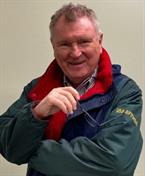Study uses an integrated scanner, infrared thermal guidance, and optical coherence tomography to assess the outcomes of focused heating of the skin in the treatment of basal cell cancers.
.jpg?sfvrsn=757e93b_0&MaxWidth=250&MaxHeight=&ScaleUp=false&Quality=High&Method=ResizeFitToAreaArguments&Signature=DFDCF5C7DBB0F6D551AA26F5638BDC6962681F9A)
Wausau, WI (February 10, 2021) – In designing a laser system for diseased skin, such as in the treatment of basal cell cancers (BCCs), we need first to understand the impact of lasers on normal skin. The objective of this study was to combine an established treatment for BCCs (long-pulsed (LP) 1064nm Nd:YAG laser) with optical coherence tomography (OCT) and the Forward Looking Infrared (FLIR) thermal camera to provide modulated controlled hyperthermic skin heating of between 55-59 degrees C for one minute. The incorporation of more intelligent systems in lasers and other devices is likely to improve outcomes. More predictable zones of thermal injury might be achieved when used in association with non-invasive monitoring and precise laser energy delivery.
This clinical report, published in Lasers in Surgery and Medicine (LSM), the official journal of the American Society for Laser Medicine and Surgery, Inc. (ASLMS), was selected as the February 2021 Editor’s Choice.
The study, led by Christopher B. Zachary, MBBS, FRCP, is titled “Assessing the Outcomes of Focused Heating of the Skin by a Long‐Pulsed 1064 nm Laser with an Integrated Scanner, Infrared Thermal Guidance, and Optical Coherence Tomography.”
This study used a scanned long-pulsed 1064nm laser combined with thermal imaging negative feedback to investigate optimal parameters to maintain a hyperthermic event between 55-59°C for one minute. Adjusted parameters included fluence, pulse overlap, pulse duration, scan size, and pulse rate. A forward‐looking infrared (FLIR) camera was used to record skin temperature. Outcome measures included skin temperature, post-treatment appearance, and OCT assessment of skin and vascular damage.
The authors found that the modulated LP 1064 nm laser with constant negative FLIR feedback can be used to achieve controlled hyperthermic tissue injury likely to provide improved outcomes in the treatment of skin cancers.
 “We can't be comfortable with the status quo. It's our job to design intelligent laser systems that will make the patient encounter safer and more effective,” said Zachary.
“We can't be comfortable with the status quo. It's our job to design intelligent laser systems that will make the patient encounter safer and more effective,” said Zachary.
Dr. Christopher B. Zachary, MBBS, FRCP, is a dermatologist specializing in cutaneous oncology and reconstruction, cosmetic and laser surgery, and is professor and chair, department of dermatology, University of California-Irvine.
Editor’s Choice is an exclusive article published in LSM, the official journal of the ASLMS. View the complete manuscript.
The American Society for Laser Medicine and Surgery, Inc. (ASLMS) is the largest multidisciplinary professional organization dedicated to the development and application of lasers and related technology for health care applications. ASLMS promotes excellence in patient care by advancing biomedical application of lasers and other related technologies worldwide. ASLMS membership includes physicians, surgeons, nurses and allied health professionals representing multiple specialties, physicists involved in product development, biomedical engineers, biologists, industry representatives and manufacturers. For more information, visit aslms.org.